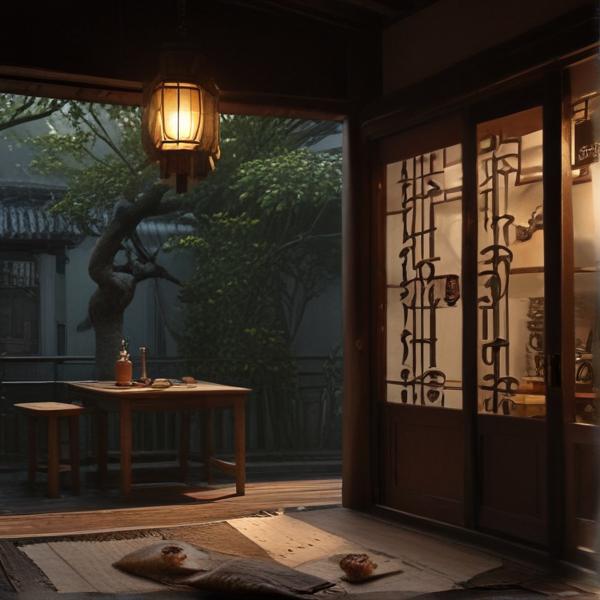基本信息 (Basic Information)
含义与用法 (Meanings & Usage)
中文核心释义 (Core Chinese Meaning): 一种落叶乔木,称为‘椿树’或‘香椿’,也常用作人名、象征长寿或父亲。
英文核心释义 (Core English Meaning): Chinese toon tree (Toona sinensis), a deciduous tree; also used as a personal name, a symbol of longevity or father.
象形意义 / 为何这么写 (Pictographic Meaning / Writing Rationale)
文言文释义 (Classical Chinese Meaning)
深入学习 (In-depth Study)
字源故事 (Origin Story)
字形演变 (Character Evolution)
常用词语和例句 (Common Words & Examples)
香椿 (Chinese toon (Toona sinensis), the fragrant shoots of the toon tree used as food.)
春天的时候,家家户户都会吃香椿炒蛋。
Eng: In spring, every household eats fried eggs with Chinese toon shoots.
椿树 (Toon tree; the deciduous tree called 'chun' or 'xiangchun' in Chinese.)
院子里有一棵高大的椿树。
Eng: There is a tall toon tree in the yard.
椿萱 (A literary expression for parents (‘椿’ symbolizes father, ‘萱’ symbolizes mother).)
椿萱并茂,幸福美满。
Eng: Both parents are well, and life is happy and harmonious.
相关成语 (Related Idioms)
椿萱并茂
Meaning: Both parents are alive and well; a wish or praise for parents’ health and longevity.
多语言翻译 (核心释义) (Translations (Core Meaning))
- French: arbre toon, arbre à légumes chinois, symbole de longévité ou père
- German: Chinesischer Toona-Baum, Symbol für Langlebigkeit oder Vater
- Spanish: árbol toon chino, símbolo de longevidad o padre
- Italian: albero toon cinese, simbolo di longevità o padre
- Portuguese: árvore toon chinesa, símbolo de longevidade ou pai
- Russian: дерево чунь (китайский туния), символ долголетия или отец
- Arabic: شجرة التون الصينية، رمز لطول العمر أو الأب
- Persian: درخت تون چینی، نماد طول عمر یا پدر
- Dutch: Chinese toonboom, symbool voor lang leven of vader
- Polish: chińskie drzewo toon, symbol długowieczności lub ojca
- Vietnamese: Cây toon Trung Quốc, biểu tượng của sự trường thọ hoặc cha
- Ukrainian: китайське дерево чунь, символ довголіття або батька
视频学习资源 (Video Learning Resources)
通过以下链接在热门视频网站搜索 "椿" 的更多讲解:
Search for more explanations of "椿" on popular video sites:
- 在 Bilibili.com 搜索 "椿 字源 说文解字" (Search on Bilibili)
- 在 YouTube.com 搜索 "椿 character origin etymology" (Search on YouTube)
网络参考 (Web References for "椿") ()
网络内容摘要 (Web Content Summary):
-
核心含义:“椿”是一个常用汉字,读作 chūn,最初指一种树木——香椿(Toona sinensis),也是形声字,字形从“木”,声旁为“春”。 Core meaning: “椿” (chūn) is a common Chinese character, originally referring to the Chinese toon tree (Toona sinensis). It is a phono-semantic compound character, with the “wood” radical and “chun” as the phonetic.
-
文化背景:古代传说中,大椿树十分长寿,因此“椿”常被用来象征长寿,并引申为对父亲、父母的尊称(如“椿年”表示高龄)。 Cultural background: In ancient legends, the great toon tree was famous for its longevity, so “椿” symbolizes long life and is used as a respectful reference to one’s father or parents (e.g., “椿年” meaning “advanced age”).
-
易混淆点:“椿”容易与表示“春天”的“春”混淆,但“椿”指树或与长寿、父亲相关,“春”特指季节。 Common confusion: “椿” is often confused with “春” (spring), but “椿” refers to trees or longevity/parents, while “春” denotes the season.
-
常用词和用法:常见词有“椿树”(Chinese toon tree)、“椿年”(高寿之年)等。某些情境下,“椿”也指“臭椿”(Ailanthus altissima),还可以作为姓氏使用。 Common words and usage: Frequently found in words like “椿树” (Chinese toon), “椿年” (advanced age). Sometimes refers to the “stinking sumac” (Ailanthus altissima), and can also be a surname.
本字文化内涵丰富,实际用法中要注意区分与相似字及词义扩展。 This character is rich in cultural connotation; pay attention to distinctions with similar characters or extended meanings in actual usage.
椿的解释|椿的意思|汉典"椿"字的基本解释 - 漢典
椿 chūn 〈名〉 (1) (形声。从木,春声。本义:木名。指大椿。古代传说大椿长寿,后因以喻父。如:椿年) (2) 同本义 [a long-living tree] 上古有大椿者。—— 《庄子·逍遥游》 。 司马 注: "椿木一名橓。" (3) 因其长寿,后用来形容高龄。亦用以指父亲。如:椿年(椿树 ...
椿(汉语汉字)_百度百科
椿是汉语通用规范一级字(常用字)形声字,小篆从木,春声,读作chūn。本义为木名,指大椿(香椿树),司马注:椿木一名橓。古代传说大椿长寿,为长寿之意,后因以喻父,后引申为父母。还指落叶乔木"臭椿",也用做姓氏。(基本信息栏参考资料:)
更多图片 (椿 More Images) ()
